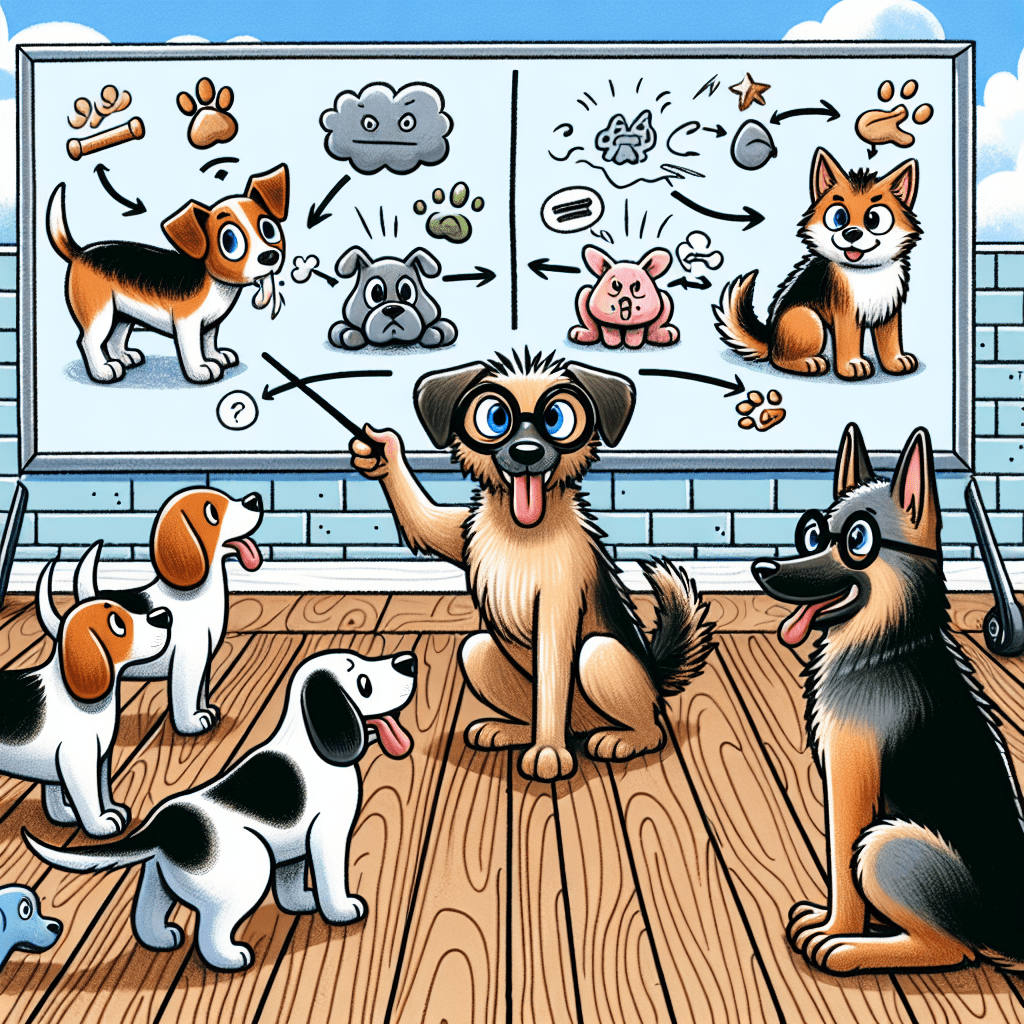Get your free Book Here

As a passionate dog lover and seasoned dog trainer, I’ve had the joy of watching countless canine friendships flourish, and I understand that some relationships between our furry friends don’t always start off on the right paw. It can be perplexing, and sometimes disheartening, to see your dog display dislike or discomfort towards another dog. But fear not! With a touch of insight and the right approach, we can turn these encounters into positive experiences. Today we explore the common reasons for canine dislike, while providing real-world solutions that will make you optimistic about transforming these interactions.
Chapter 1: Understanding Canine Dislike
Before we dive into solutions, let’s explore the underlying reasons dogs may not get along. Understanding these reasons can help us tackle the issue effectively.
-
- Lack of Socialization: Puppies that don’t get enough exposure to other dogs might not know how to interact properly.
-
- Fear and Anxiety: Past traumatic experiences can make a dog wary of others.
-
- Resource Guarding: Dogs naturally guard their food, toys, or space, which can lead to conflicts.
-
- Different Play Styles: Not all dogs have the same energy levels or play behaviors. Some prefer chasing while others enjoy wrestling.
-
- Health Issues: A dog in pain or not feeling well may behave irritably towards others.
Identifying the root reason is the first step toward guiding our furry friends toward better relationships.
Chapter 2: Why It’s Important to Tackle Dislike
Addressing canine dislike is crucial for several reasons:
-
- Improved Safety: Keeping your dog socialized reduces the risk of aggressive encounters.
-
- Better Quality of Life: Dogs that socialize well tend to be happier and healthier.
-
- Easier Outings: When your dog is comfortable around others, trips to the dog park, vet, or groomers become much easier.
Understanding the importance of fostering positive dog interactions can motivate you to take the necessary steps for improvement.
Chapter 3: Who Benefits from Strong Canine Relationships?
Both dogs and humans reap rewards from strong doggie relationships.
-
- Dogs: Enhanced social skills lead to better behavior overall.
-
- Humans: We enjoy less stress when our dogs get along. Also, our dogs provide companionship; seeing them enjoy playtime with others is heartwarming.
-
- Community: Friendly dogs contribute to a safer and happier neighborhood environment.
Chapter 4: Practical Solutions for Improving Canine Relationships
Having established the reasons behind canine dislike and its significance, let’s look at practical solutions to improve relations:
-
- Controlled Introductions: Use leash introductions in neutral areas to get both dogs used to one another gradually.
-
- Positive Reinforcement: Reward your dog with treats when they exhibit calm behavior around other dogs.
-
- Training Classes: Engaging in training classes will expose your dog to others in a structured manner.
-
- Desensitization: Gradually train your dog to be comfortable around other dogs by increasing the level of exposure slowly.
-
- Body Language Observance: Encourage your dog to be aware of other dogs’ body language and energy levels.
-
- Provide Escape Routes: Make sure dogs feel secure by having areas to retreat to if they feel overwhelmed.
-
- Team Play: Engage in activities that require teamwork, such as agility courses or fetch, allowing your dog to interact positively.
-
- Seek Professional Help: Don’t hesitate to consult with a dog trainer or behaviorist if issues persist.
-
- Socialization Outings: Regularly expose your dog to various environments with other dogs, starting with those they are comfortable with.
-
- Patience and Consistency: Keep in mind that relationships take time to develop. Celebrate small victories along the way!
Chapter 5: Real-Life Examples and Comparisons
Let’s share some real-world success stories to inspire you:
-
- Buddy and Max: A fearful Dachshund initially disliked more boisterous dogs. After several controlled introductions, Buddy learned to play with Max, finding common ground in their game of fetch.
-
- Bella’s Transformation: Bella was very possessive and would bark at other dogs in the park. After consistent training, she learned to share her toys. Now, she often invites play with dogs she once disliked!
-
- Two Puppies, One Family: When adopting two puppies that were raised separately, their initial interactions were rocky. With patience, they became inseparable companions, showcasing the power of bonding techniques.
With commitment and the right strategies, almost any dog can cozy up to another pooch!
Unlock the Secrets to a Well-Behaved Dog! 🐾 Tired of your pup’s bad habits? Discover how to transform your unruly dog into a loving companion with our FREE Dog Training Mini Course! Learn essential commands, potty training tips, and effective techniques to eliminate unwanted behaviors in just days. Don’t miss out—sign up now and start your journey to a happier, obedient dog! Join Here!
FAQs
Q1: What if my dog is aggressive towards others?
A1: It’s essential to seek a professional dog trainer who specializes in aggression to ensure everyone’s safety.
Q2: Can dog dislike be fixed?
A2: Yes, with consistent training, socialization, and patience, many dogs can learn to get along with others.
Q3: How long does it take to improve a dog’s relationships?
A3: It varies by dog, but with dedication, dogs can show vast improvements in a few weeks to months.
Q4: Is it normal for dogs to dislike certain breeds?
A4: Yes, dogs can have preferences based on past experiences, but with socialization, these can often be overcome.
Q5: Are there signs I should watch for during introductions?
A5: Yes, watch for growling, tail tucking, or stiff body language, which may indicate discomfort.
Instantly Access Your FREE Children’s Books Here!
Disclaimer: As an Amazon Associate, I earn from qualifying purchases. I may earn a commission from qualifying purchases as an affiliate. Please note that I only recommend products I believe will provide value to my readers.







